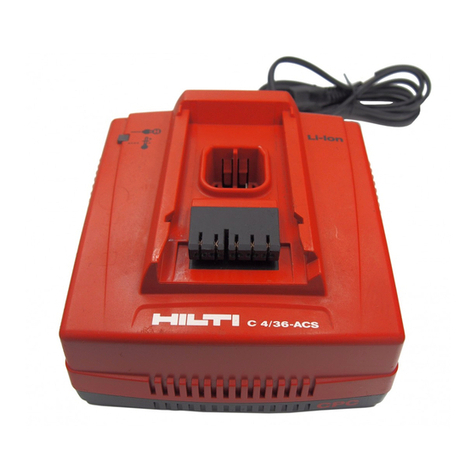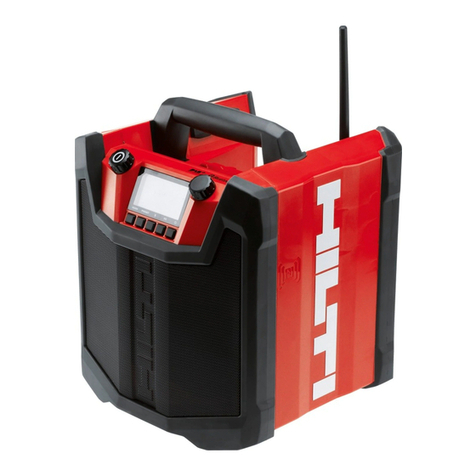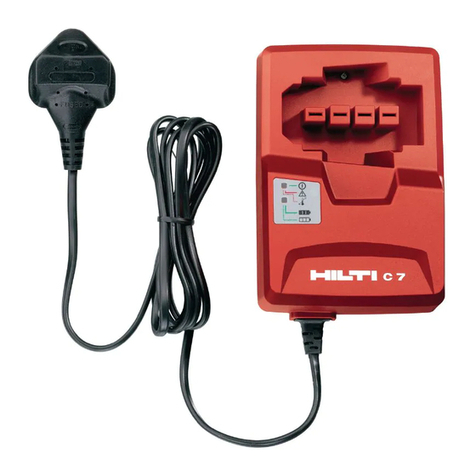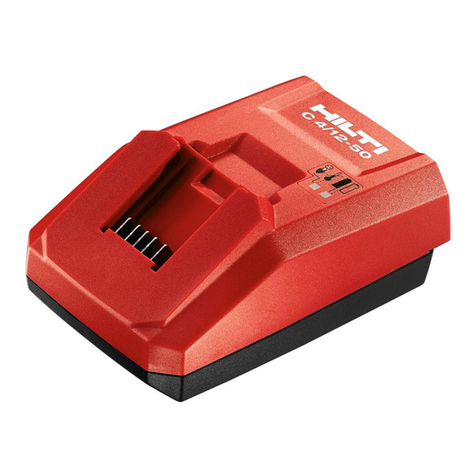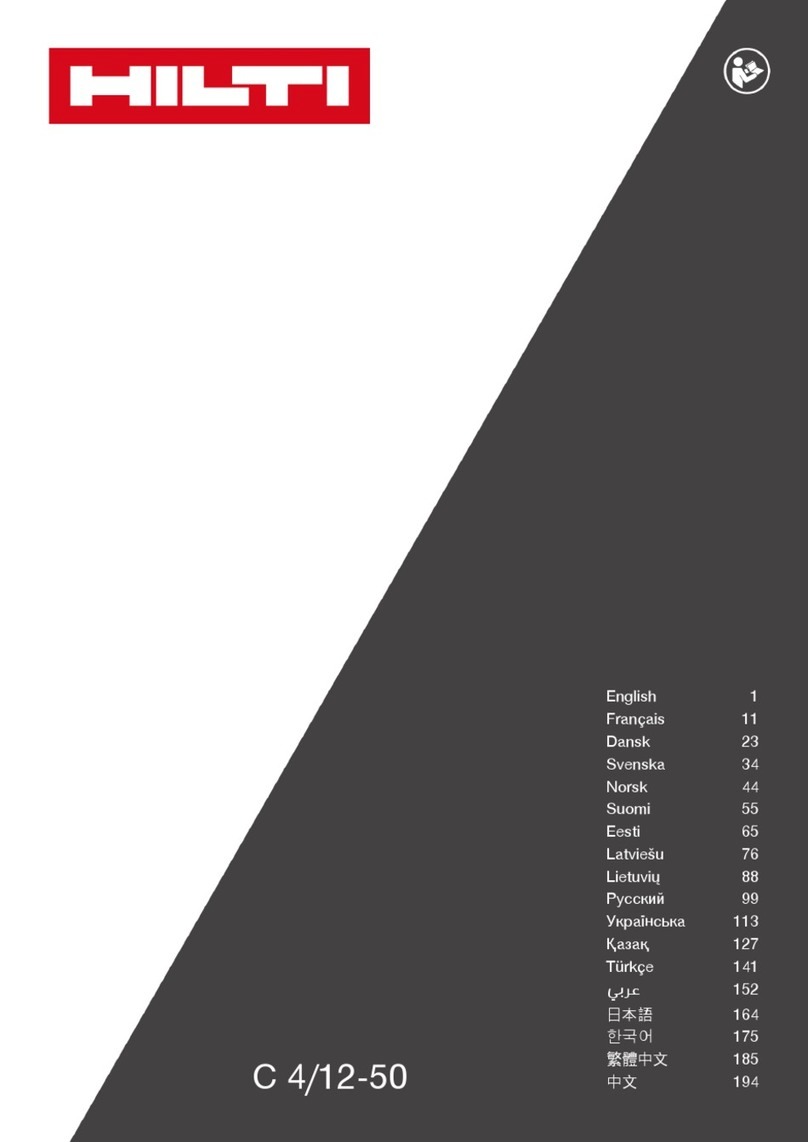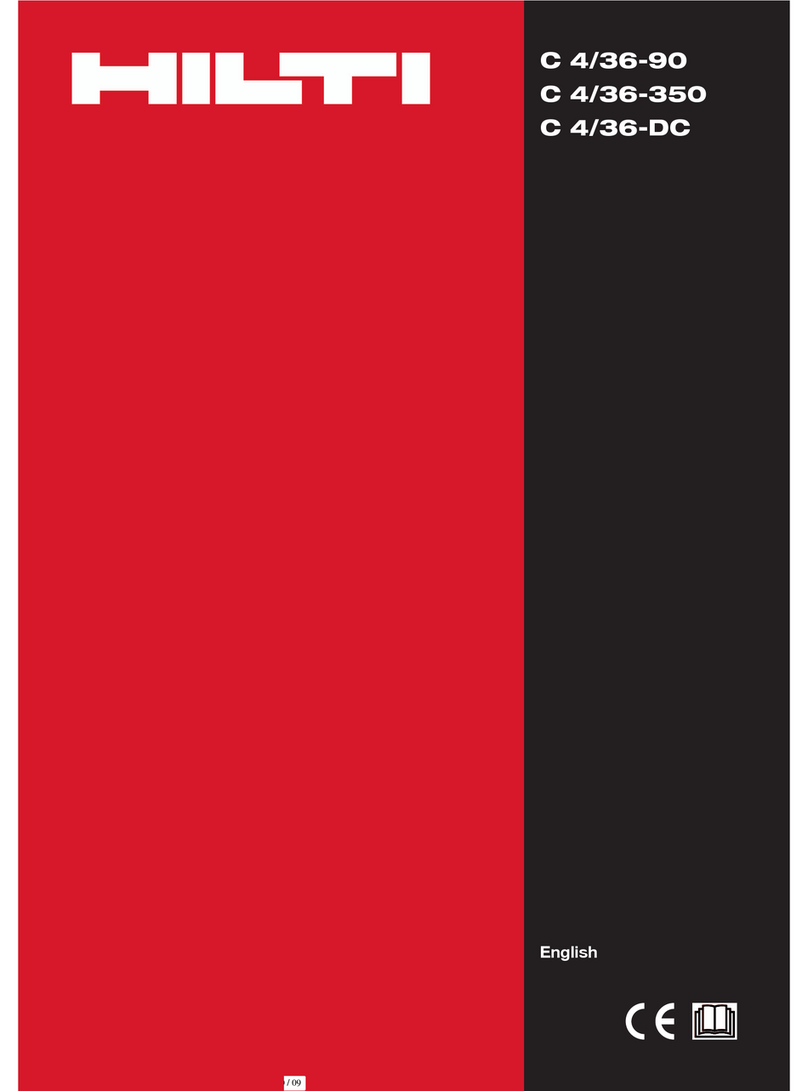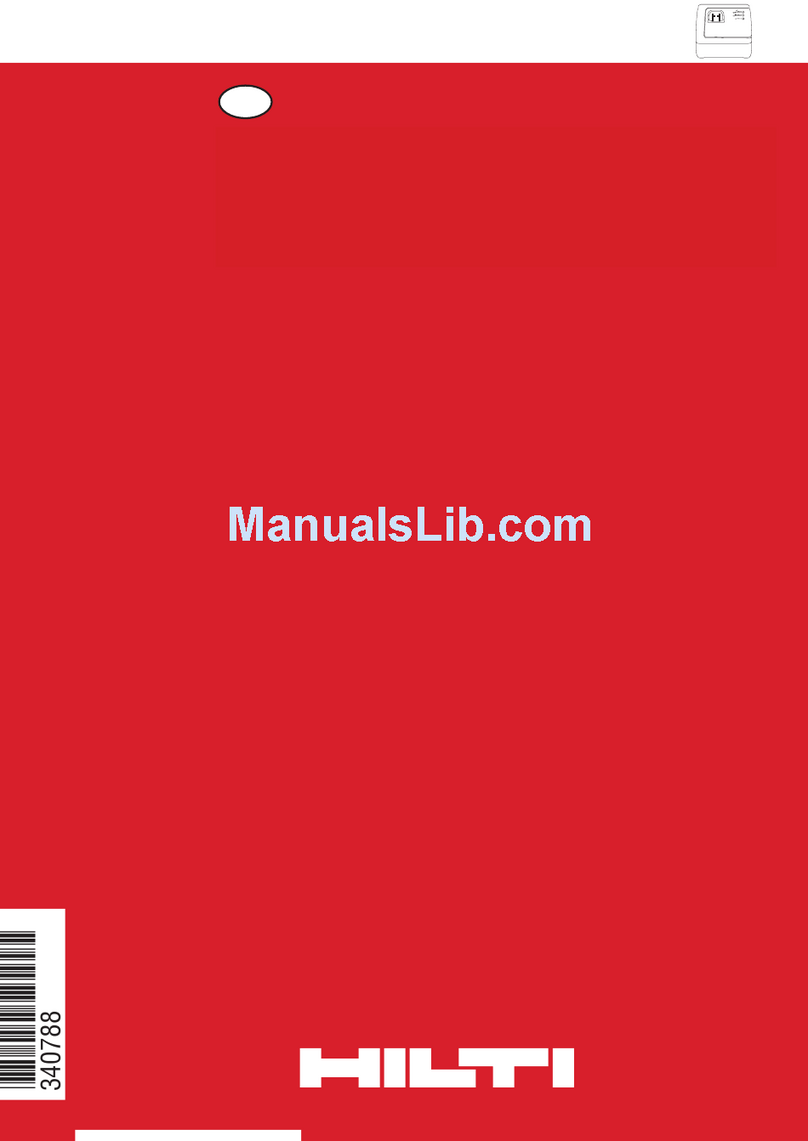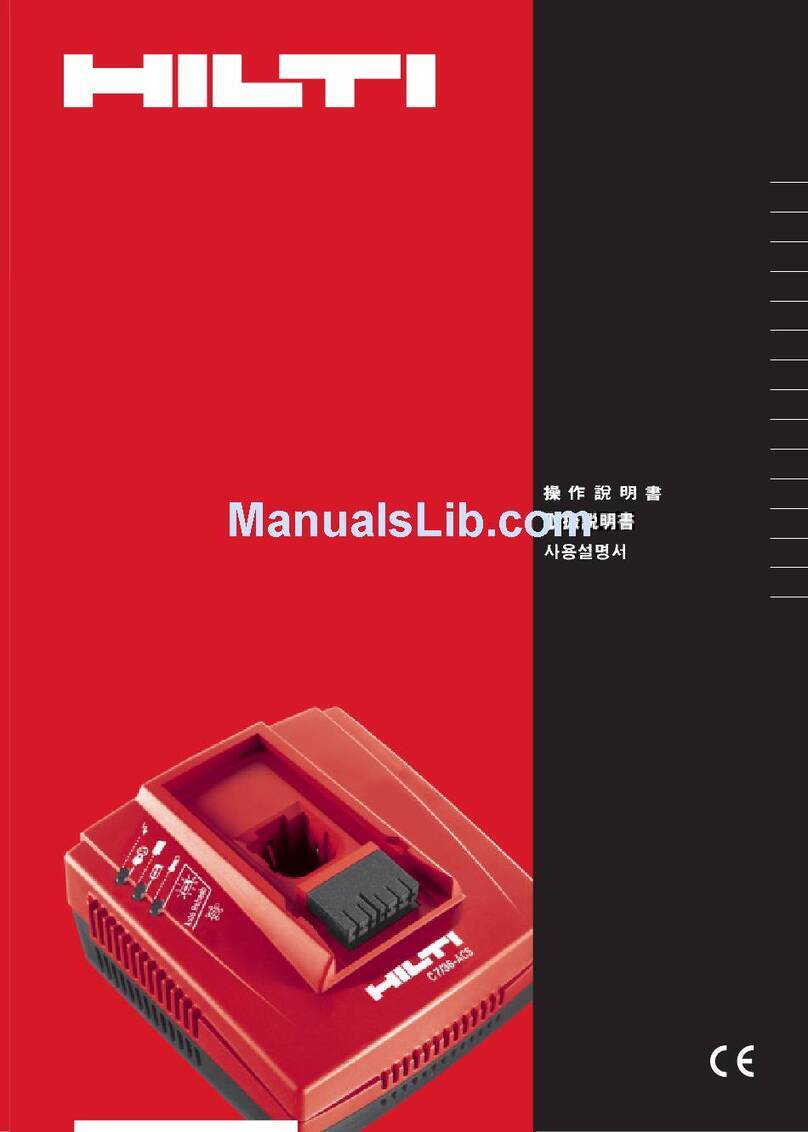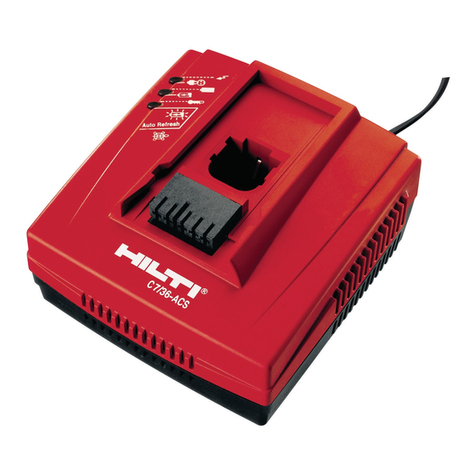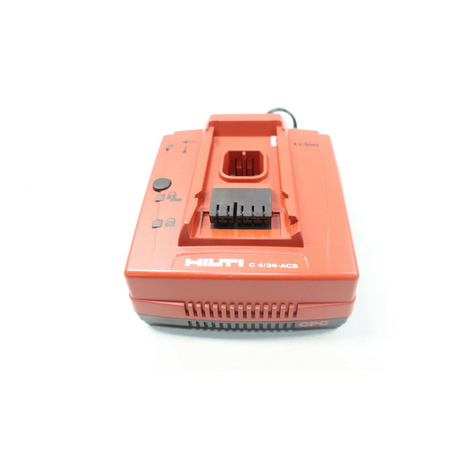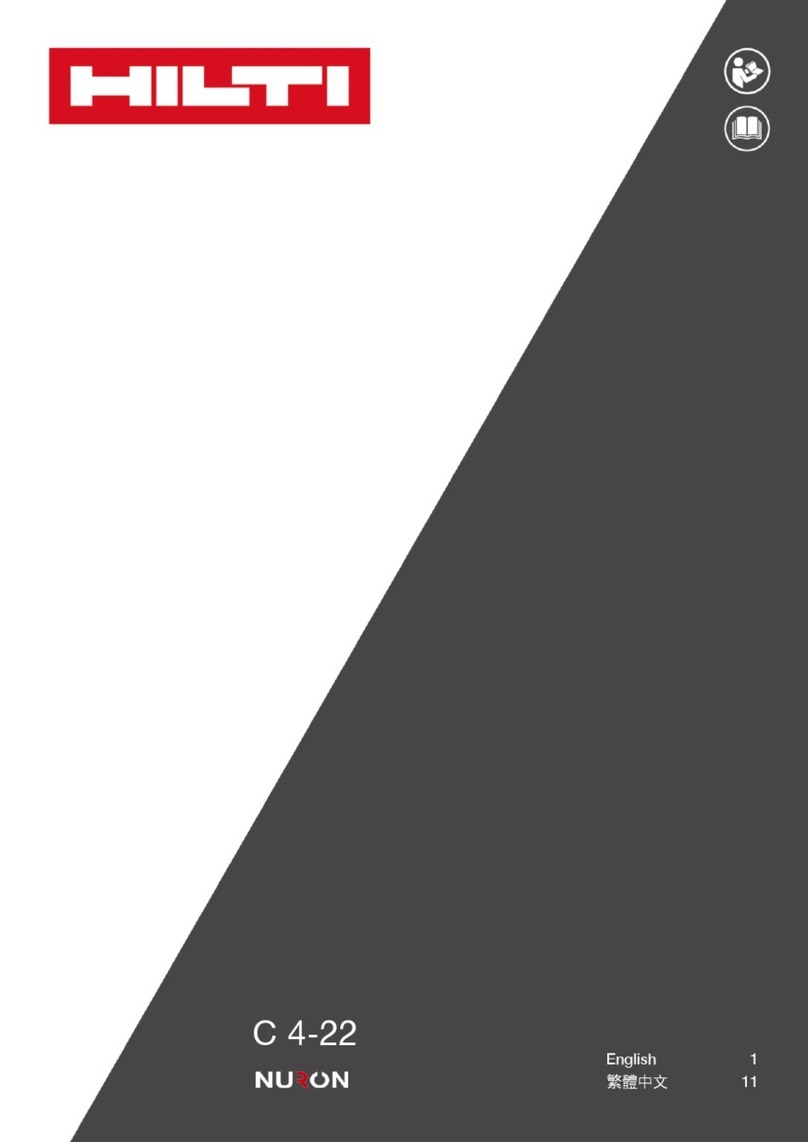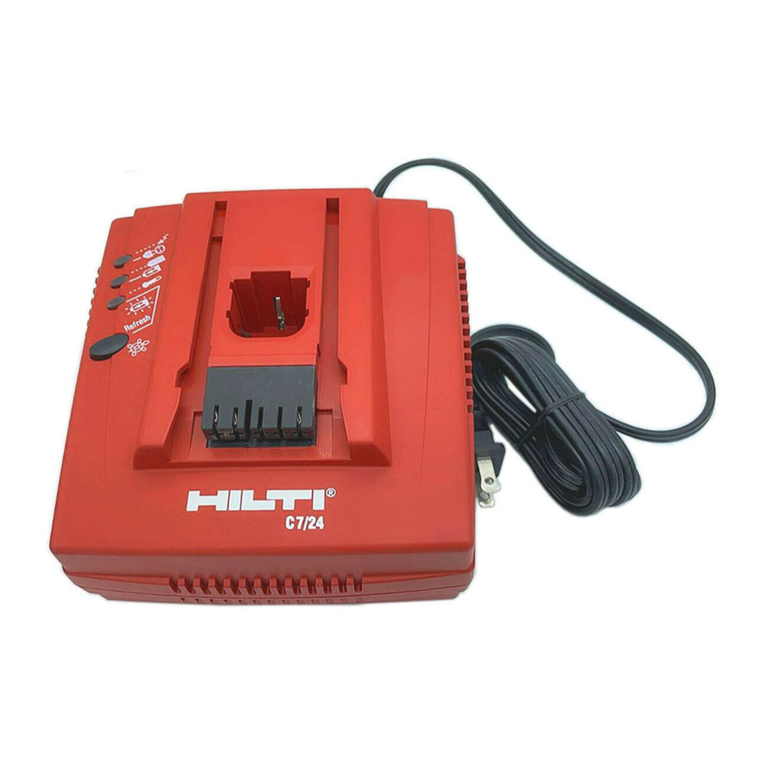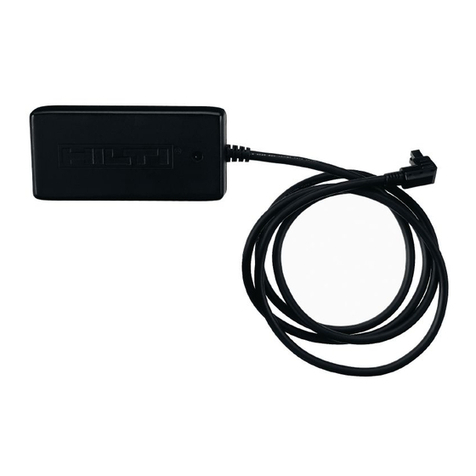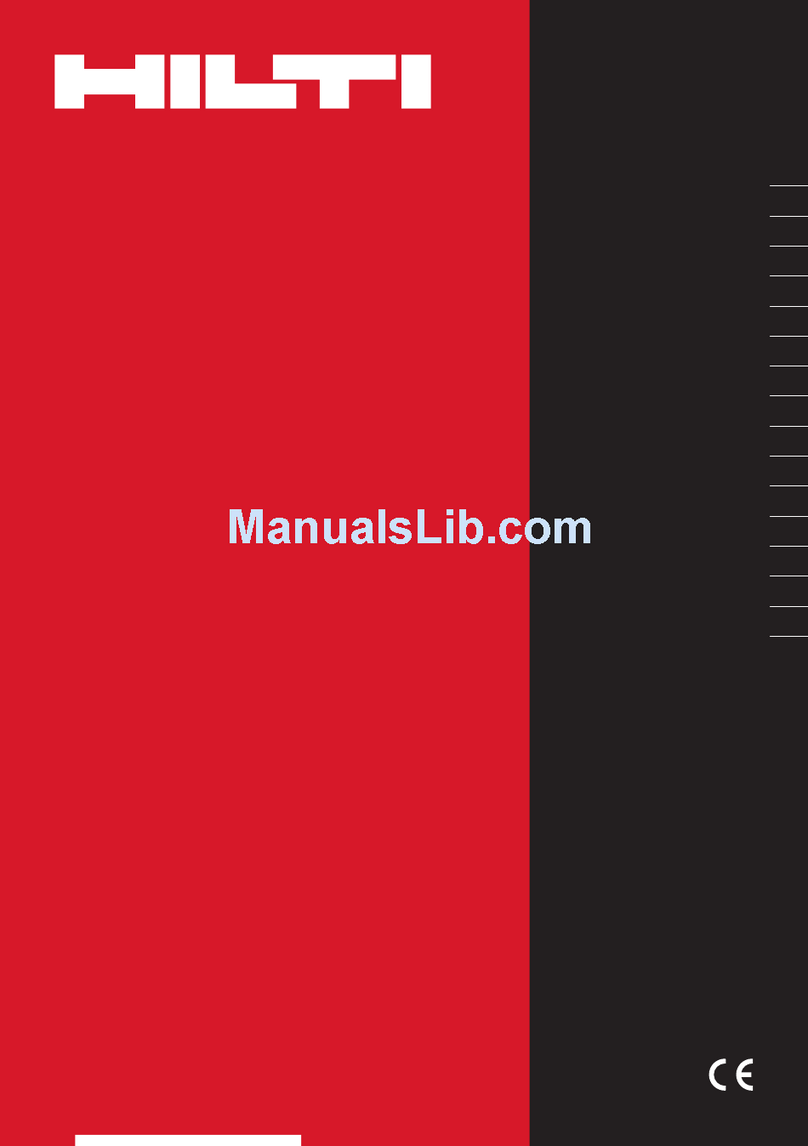5.2 Battery use and care
NOTE
Battery performance drops at low temperatures.
Never use the battery until the cells become fully
discharged. Change to the second battery in good
time. Recharge the battery immediately so that it is
ready for reuse.
Store the battery in a cool, dry place. Never store the
battery where it is exposed to the heat of the sun, on
a radiator, behind a motor vehicle windscreen or at a
window. Batteries that have reached the end of their
life must be disposed of safely and correctly to avoid
environmental pollution.
5.3 Switching the appliance on
Plug the supply cord into the power outlet.
NOTE
The green LED lights after the appliance has been
plugged in. If the green LED doesn’t light or goes out
during operation, unplug the supply cord from the
power outlet and then plug it in again. If the green
LED still doesn’t light after reconnecting it several
times, return the appliance to Hilti Service for repair.
6. Operation
6.1 Inserting and charging the battery
CAUTION
This appliance is designed for use with the specified
Hilti batteries. Charging other batteries is not permiss-
ible. A risk of personal injury or fire and irreparable
damage to the battery and charger may otherwise res-
ult. A caustic liquid may leak from defective batteries.
Avoid contact with this liquid.
NOTE
Before inserting the battery, check that the contacts
are clean and free from grease.
Check that the battery and charger interfaces match
(keyed fit).
Charging begins automatically after insertion of the
battery in the charger.
NOTE
In case the battery is left in the charger: After com-
pletion of charging, battery voltage is monitored peri-
odically so long as the charger is in operating mode,
i.e. connected to the electric supply. A new charging
cycle is started if the battery voltage drops below a
certain value. If the charger, with battery inserted,
is disconnected from the electric supply and then
reconnected, the battery voltage is checked but the
battery will be recharged only if its voltage is found to
be below a certain value. For safety reasons, however,
it is recommended that the battery is removed from
the charger after completion of a charging.
6.2 Care of the Li-ion battery
Avoid entrance of moisture.
Charge the battery fully before using it for the first
time.
In order to achieve maximum battery life, stop dis-
charging the battery as soon as a significant drop in
performance is noticed.
NOTE
If use of the appliance continues, further battery
discharge will be stopped automatically before the
battery cells suffer damage.
Charge the battery with the Hilti charger approved for
use with Li-ion batteries.
NOTE
- A conditioning charge (as is required with NiCd or
NiMH batteries) is not necessary.
- Interruption of the charging procedure has no neg-
ative effect on battery life.
- Charging can be started at any time with no negative
effect battery life. There is no memory effect (as with
NiCd or NiMH batteries).
- For best results, batteries should be stored fully
charged in a cool dry place. Avoid charging the battery
in places subject to high ambient temperatures (e.g.
at a window) as this has an adverse effect on battery
life and increases the rate of self-discharge.
- If the battery no longer reaches full charge, it may
have lost capacity due to aging or overstressing. It
is possible to continue working with a battery in this
condition but it should be replaced in good time.
en
5
Printed: 07.07.2013 | Doc-Nr: PUB / 5069444 / 000 / 00
